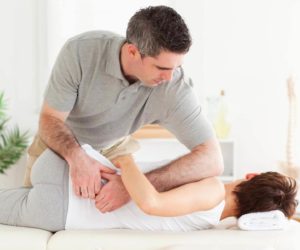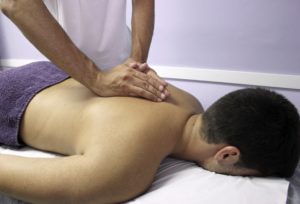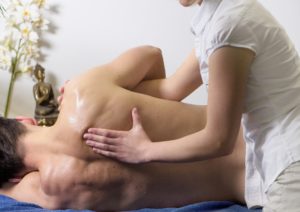Learn how this ‘little’ known historical form of healthcare is fast becoming the new alternative to pills and other physical therapies. Giving quick results that last where other forms of healthcare have not succeeded.
If you’ve ever suffered from back pain, neck pain or sciatic or any form of nerve pain then you’ll know how desperate you can get.
You’ll literally have tried everything before someone finally suggests visiting an “Osteopath”…
What’s that?
An Osteopath.
Most people think this means they only deal with bones…
You’d be right pretty much!
Osteopathy is a system of healthcare that focuses on the “Relief” of bones.
This might sound weird but hear me out…
The early founders of Osteopathy understood that the bones were a source of structure…
So held the body upright, also..
Function, allowing the body to move and also providing the body with much needed blood.
Most people are not aware that blood is formed within the bones (haversian system and bone marrow).
Interesting right?
That’s not all that is special about Osteopathy, just read on to find out much more and how it can help you…
Osteopathic manipulative treatment
Osteopathic manipulative treatment or OMT (as it is often known) is a part of osteopathic medicine that involves helping to treat a variety of health conditions. OMT is based on the following principles:
1) The body as a unit including the mind, body, and spirit.
2) The body is capable of self-healing.
3) The structure of the body can affect the function of the body, the function of the body can also affect the structure of the body.
Through the understanding of human anatomy and pathologies, OMT works to restore normal function to the body. The overall aim of OMT is to treat the dysfunction of the human body which can affect the somatic system of the body (skeletal system, joints, myofascial, blood supply, lymphatic function, and nerves).
Osteopaths often use OMT in combinations with other types of treatments to help assist the natural healing process of the human body. Treatment may be classified as direct (working into the restricted motion), or indirect (working into motions of ease).

Different Osteopathic manipulative therapy techniques
High-velocity low amplitude technique
The HVLA technique is a direct, active technique in which the osteopath engages the pathological barrier of a joint that is restricted in a normal plane of movement. Once a restricted “barrier” is engaged, the osteopath employs a quick thrust of short distance through the inhibited plane of motion. The purpose of this technique is to re-establish a normal range of motion by directly engaging the restrictive component of a joint’s somatic dysfunction. HVLA is contraindicated especially in patients with cervical rheumatoid arthritis, carotid or vertebrobasilar disease, bony metastasis, and severe osteopenia.

Muscle energy technique
One cause of somatic dysfunction is thought to derive from chronically contracted muscles affecting the body’s normal range of movement. Muscle energy is a direct, active treatment with broad applications to any part of the body restricted in motion. In treatment, the physician engages the restrictive barrier and asks the patient to voluntarily move from a precisely controlled position. During the patient’s effort, the osteopath provides an isometric counterforce for 3 to 5 seconds and then allows the muscle to relax for 3 to 5 seconds. A new restrictive barrier is then engaged and the process is repeated 2 to 4 times.
Muscle energy increases the length of hypertonic restricted muscles and allows restoration of normal physiological motion. The mechanism of action of muscle energy is thought to be related to the reciprocal inhibition of agonist/antagonist muscles and the Golgi tendon reflex. When a stretch reflex engages an one muscle, its opposite muscle relaxes via reciprocal inhibition. Similarly, as sufficient tension is placed on the Golgi tendon organ of a muscle, reflex relaxation occurs in the previously hypertonic muscle. Muscle energy is contraindicated in patients with low vitality, fractures, unstable joints, and recent surgery.
Counterstrain
Treatment using counterstrain is directed at areas of tender tissue called tender points. Tender points are painful to the touch and occur in predictable locations throughout the musculature of the body. They are thought to arise from an antagonist muscle in a state of “panic,” lengthening in response to a strained and painful agonist. Counterstrain is an indirect, passive technique in which the patient is positioned away from a restrictive barrier of motion.
The physician monitors the tender point in one hand and holds the patient in a position of ease with the other for about 90 seconds. By placing the body into a position of maximal ease and comfort, the somatic dysfunction of the strained muscle should begin to ease. Treatment is repeated until a 70% reduction in tenderness is reported by the patient.
Tender points can be found in acute and chronic conditions and may be a primary indicator of somatic dysfunction or may be secondary to another medical cause. Absolute contraindications for counterstrain include patients with fractures or torn tendons in areas of dysfunction.
Myofascial release
Myofascial release (MFR) is a technique that focuses on fascia and the surrounding muscles. Having found an area of myofascial strain, the physician applies compression or distraction forces to the somatic dysfunction using palpatory feedback to guide the strain to resolution. MFR techniques can either directly or indirectly engage restrictive barriers depending on the physician’s perceived response of the fascia to palpation.
The effectiveness of myofascial techniques is explained via the concept of tensegrity. A tensegrity structure consists of multiple, non-touching rods balanced by a continuous tension system. If one component fails, so does the entire structure. Applying this concept to the human body suggests that bones are the rods and the continuous tension system is the myofascial and ligamentous tissues of the body. Therefore, myofascial strain theoretically has influences across the entire body and resolution allows return of a more balanced homeostatic equilibrium.
The use of MFR depends on safe introduction of motion upon dysfunctional tissue. Consequently, MFR is contraindicated for patients with open wounds, fractures, recent surgery, deep vein thrombosis, an underlying neoplasm, or other internal injuries.

Craniosacral therapy
Osteopathy in the cranial field was pioneered by a student of A.T. Still’s named William Sutherland, DO, (1873–1954). Central to the cranial technique is the concept of the primary respiratory mechanism, which consists of the inherent rhythmic motion of the brain and spinal cord, fluctuation of cerebrospinal fluid (CSF), mobility of intracranial and intraspinal membranes, the articular mobility of cranial bones, and the involuntary mobility of the sacrum between ilia.
The goals of various treatment modalities are to normalise nerve function, eliminate circulatory stasis, normalise CSF fluctuation, release membranous tension, correct cranial articular strains, and modify gross structural patterns. It is important to note that many treatment modalities across the spectrum of OMT are applied to the cranium in addition to those affecting the primary respiratory mechanism.
Cranial therapy requires special training and should be performed only by certified practitioners. Cranial manipulation is contraindicated for patients with recent trauma, a lack of biomechanical dysfunction or an aversion to receiving treatment.
Lymphatic drainage
Most OMT treatments have an effect on lymphatic circulation. As somatic dysfunction resolves, the body’s natural homeostatic mechanisms are normalised and lymphatic drainage is naturally enhanced. However, lymphatic treatments remove impediments to lymphatic flow and augment the clearance of lymph and other immune elements from specific congested tissues. All lymphatic techniques begin with the treatment of somatic dysfunction in areas known as “choke points.”
The three chokepoints include:
- The thoracic inlet
- The respiratory diaphragm
- The pelvic diaphragm
These are the areas that can impede lymph flow between body compartments when dysfunctional. Once the obstruction is reduced, lymphatic treatments include lymphatic pumping, soft tissue, and manual drainage techniques can be applied in order to promote fluid movement. Lymphatic techniques are contraindicated in patients with metastatic cancer, certain infections (e.g., tuberculosis), and hypercoagulable states.
Osteopathy sounds great and exactly what I need…
So, you see Osteopathy has a lot that is can offer you if you are in pain, event if you are not in pain the health benefits of seeing and Osteopath are significant and in some cases, so our patients tell us, have prevented (racing drivers, sports men and women and athletes) and sped up recovery of injury (almost all clients we see)!
This article was written by our team of specialist therapists at Perfect Balance Clinic. If you would like more specific advice about how our team can help you with this condition or symptoms you may be having, please complete the contact form below and one of the team will get back to you shortly.





